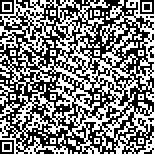| 摘要: |
| [摘要] 目的 验证中文版福特应激性失眠反应测验(FIRST-C)在短期失眠障碍(STID)患者中的心理测量学特征。方法 于2017年11月至2019年6月期间在南方医科大学南方医院门诊招募STID患者172例(STID组),另选取睡眠良好对照者(GSC)150名(GSC组)。采用FIRST-C、失眠严重程度指数(ISI)、艾普沃斯嗜睡量表(ESS)和医院焦虑抑郁量表(HADS)进行评估。其中72例STID患者在3个月后接受重测。结果 STID组的FIRST-C总分显著高于GSC组(P<0.05)。探索性因子分析显示,FIRST-C具有单因子结构,可解释方差百分比为51.04%,各条目因子载荷范围在0.405~0.828之间。STID组的FIRST-C评分与ESS评分呈中度正相关(rs=0.498,P<0.001),与HADS评分呈轻度正相关(rs=0.174,P=0.024),与ISI评分不相关(rs=0.001,P=0.995)。受试者工作特征(ROC)曲线分析结果显示FIRST-C鉴别STID和GSC的最佳划界分值为19.5分。信度分析显示,Cronbach′s α系数和Spearman-Brown分半信度分别为0.873、0.864,条目得分与总分的相关系数范围为0.326~0.752。3个月后复测FIRST-C总分与初测FIRST-C总分差异有统计学意义(t=5.440,P<0.001)。结论 FIRST-C评估STID患者的睡眠反应性具有较好的心理测量学特征。 |
| 关键词: 福特应激性失眠反应测验 短期失眠障碍 效度 信度 |
| DOI:10.3969/j.issn.1674-3806.2024.01.02 |
| 分类号: |
| 基金项目:国家重点研发计划项目(编号:2021YFC2501500);南方医科大学南方医院临床研究专项项目(编号:2021CR009);2021年院级教育研究课题-重点培育项目(编号:21NJ-ZDPY01) |
|
| Psychometric characteristics of the Ford Insomnia Response to Stress Test—Chinese version in patients with short-term insomnia disorder |
|
PU Yiqi, WU Aike, ZHAO Yuhan, WANG Jiajia, FANG Leqin, LUO Xue, ZHANG Bin
|
|
Department of Psychiatry(Sleep Medicine Center), Nanfang Hospital, Southern Medical University, Guangzhou 510515, China
|
| Abstract: |
| [Abstract] Objective To validate the psychometric characteristics of the Ford Insomnia Response to Stress Test—Chinese version(FIRST-C) in patients with short-term insomnia disorder(STID). Methods One hundred and seventy-two STID patients were recruited as the STID group from the outpatient clinic of Nanfang Hospital, Southern Medical University between November 2017 and June 2019, and 150 good-sleeper controls(GSC) were selected as the GSC group. The patients were evaluated using FIRST-C, Insomnia Severity Index(ISI), Epworth Sleepiness Scale(ESS), and the Hospital Anxiety and Depression Scale(HADS). Among them, 72 STID patients underwent retesting after 3 months. Results The total scores of FIRST-C in the STID group were significantly higher than those in the GSC group(P<0.05). Exploratory factor analysis revealed that FIRST-C exhibited a single-factor structure, explaining 51.04% of the variance, with item factor loadings ranging from 0.405 to 0.828. The FIRST-C scores in the STID group showed a moderate possitive correlation with ESS(rs=0.498, P<0.001), a mild correlation with HADS score(rs=0.174, P=0.024) and non significant correlation with ISI score(rs=0.001, P=0.995). The receiver operating characteristic(ROC) curve analysis revealed an optimum cut-off score of 19.5 points for FIRST-C identifying STID and GSC. Reliability analysis indicated that Cronbach′s α coefficient was 0.873 and Spearman-Brown split-half reliability was 0.864, with item and total score correlation coefficient ranging from 0.326 to 0.752. Moreover, there was statistically significant difference between the total scores of FIRST-C at the 3-month retest and those at the initial test(t=5.440, P<0.001). Conclusion The FIRST-C demonstrates better psychometric characteristics for assessing sleep reactivity in patients with STID. |
| Key words: The Ford Insomnia Response to Stress Test Short-term insomnia disorder Validity Reliability |

